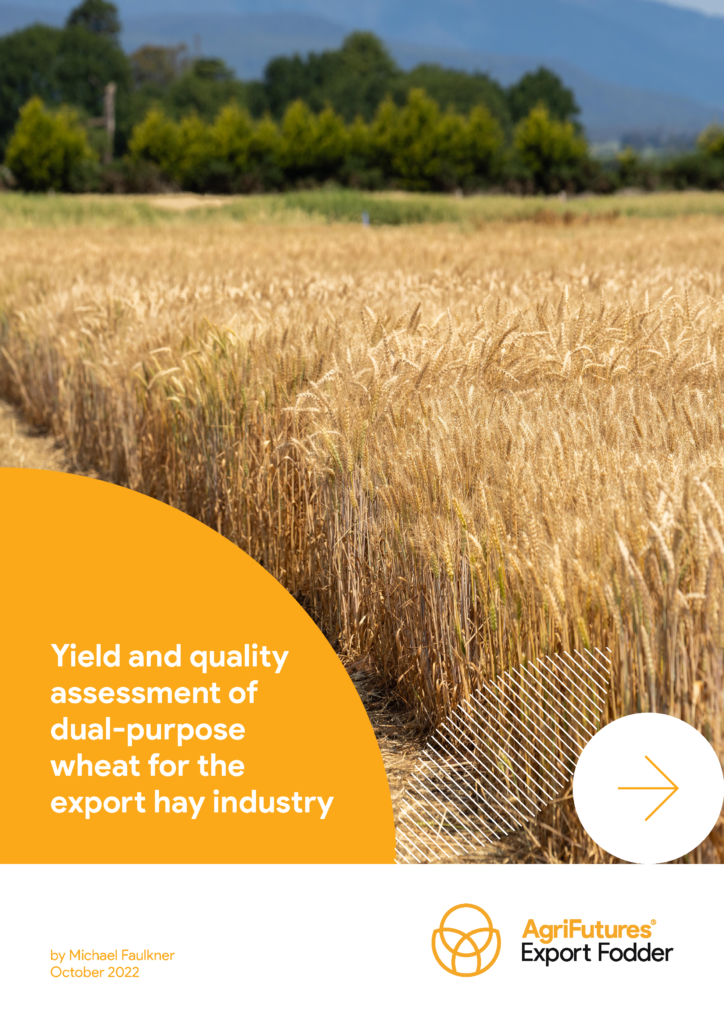The Australian fodder industry makes a fundamental contribution to the Australian economy, with an estimated value of $1.75 billion at farm gate. Wheat and barley have potential as dual-purpose cereal varieties to be utilised for either hay or grain production, and can assist both farmers and exporters to increase their options and reduce risks.
However, wheat and barley hays have historically had minor roles in the export hay industry, usually when oaten hay supplies are limited or when there is an abundance of high-quality wheat hay due to frost restricting grain yields.
This three-year project evaluated whether awnless wheat and barley varieties – those without slender bristles growing from the heads – could produce satisfactory hay yields and quality, and acceptable grain yields and quality, as genuine dual-purpose options. The project defined standards for the first time to adequately describe what characteristics are required or desirable for a dual-purpose cereal.
The results specified that wheat can be a useful dual-purpose crop under a range of production conditions. Awnless wheat varieties that produce similar- or higher-quality hay than oat varieties when grown in the same environment were identified, and met or bettered the requirements of Australian Premium White when harvested. Awnlessness is a highly desirable trait for wheat hay markets, and hay buyers prefer awnless wheats as awns can negatively impact livestock health and welfare.
Dual-purpose barley is in its infancy in export markets. While the domestic industry has some preference for barley hay, the presence of awns and the lack of objective data on livestock nutrition has meant there has been little adoption in export markets. The availability of suitable hooded or awnless barley varieties may be the catalyst for change. The project made preliminary investigations into dual-purpose barley, however there was limited genetic material available.
Awnless wheat has a role in broadacre farming in Australia and can add to the suite of offerings for the export hay industry. The hay yield and quality data provided by this project will help growers to compare and adopt these varieties, assisting the export fodder industry to create new and unique markets that complement oaten hay.





